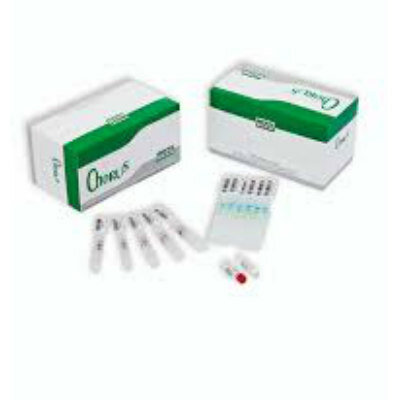Antifreeze Proteins Block Growth of Ice Crystals by Binding Irreversibly
By LabMedica International staff writers
Posted on 28 Feb 2013
Antifreeze proteins (AFPs) bind irreversibly to ice crystals and prevent their growth even when no more protein is left in solution.Posted on 28 Feb 2013
AFPs create a difference between the melting point and freezing point known as thermal hysteresis. The addition of AFPs at the interface between solid ice and liquid water inhibits the thermodynamically favored growth of the ice crystal, while ice growth is kinetically inhibited by the AFPs covering the water-accessible surfaces of the ice. Thermal hysteresis is easily measured in the lab with an instrument called a nanoliter osmometer.
Many organisms are protected from freezing by AFPs, which bind to ice, modify its morphology, and prevent its further growth. Since the initial discovery of AFPs in fish, they have also been found in insects, plants, bacteria, and fungi. These proteins have a wide range of applications in cryomedicine, cryopreservation, and frost protection for transgenic plants and vegetables. AFPs also serve as a model for understanding biomineralization, the processes by which proteins help form bones, teeth, and shells. Nonetheless, the mechanism of action of different types of antifreeze proteins is incompletely understood. Antifreeze proteins evolved independently many times with diverse structures and properties, even in closely related species. Although AFPs were discovered more than 30 years ago and have been studied extensively since then, it is not clear whether all AFPs block ice growth through a unified mechanism of action or if these diverse proteins have distinct binding properties. As measurements of the antifreeze proteins in contact with ice were elusive, this question had not been answered.
To elucidate some of these issues investigators at the Hebrew University of Jerusalem (Israel) and Ohio University (Athens, USA) prepared a fluorescently labeled version of the yellow mealworm (Tenebrio molitor) AFP. This protein is a hyperactive AFP with potency to arrest ice growth hundreds of times greater than that of fish or plant AFPs. Use of the labeled protein allowed for direct microscopic observation of protein-ice crystal interaction in a custom-designed, temperature-controlled microfluidic device.
Results published in the January 8, 2013, online edition of the journal Proceedings of the National Academy of Sciences of the United States of America (PNAS) revealed that the binding of hyperactive Tenebrio molitor AFP to ice crystals was practically irreversible, and that surface-bound AFPs were sufficient to inhibit ice crystal growth even in solutions depleted of AFPs. These findings ruled out theories of AFP activity relying on the presence of unbound protein molecules.
Related Links:
Hebrew University of Jerusalem
Ohio University













